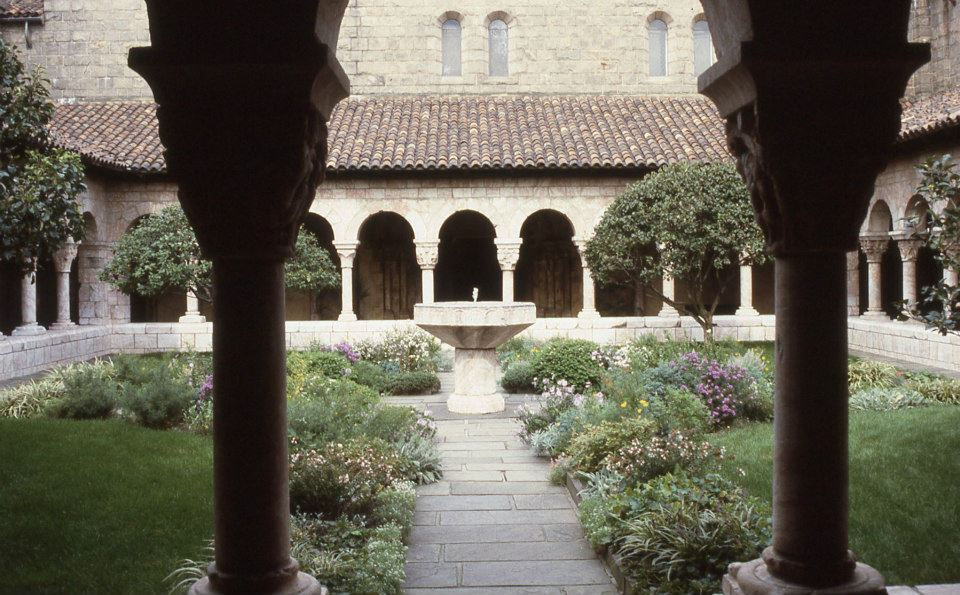Spain: Cartuja de Miraflores, Burgos
- Matthew P G

- Aug 4, 2022
- 3 min read

Interior, Cartuja de Miraflores, Burgos July 2015
[from FB post: July 24, 2015]
Just back from a splendid walk to the Monastery Cartuja Miraflores outside of town. It is small but so lovely and well preserved with a great English guide book. And the high altar is just .... wow. They give you a whole explanation of the imagery in the guide because it is so ornate. There is also a small museum (but excellent) in their chapterhouse lamenting the loss of many of their treasures throughout history. One of their prize possessions is in the Cloisters in New York City. So rather than RETURN the item, they just sent them a really swell copy of it.... wouldn't it have been nicer for the Cloisters to keep the copy and return the original??
Sanctioned art heist
A short walk out of Burgos on a hill overlooking town was a still active charterhouse of the Carthusian order. The simple church was touted as containing some of the best, original medieval art in all of Spain. The bonus was that the Carthusian monks still ran the place so it was an active monastery. The inside was spare and painted white so the altar pieces and tombs appeared almost naturally presented as artwork instead of being lost in the sea of surrounding background details that exist in most churches.
One of the tombs was that of the father and mother of Queen Isabel of Castilla (of Columbus fame):
In 1486, Isabel of Castile, patroness of the explorer Christopher Columbus, commissioned an elaborate alabaster tomb for her parents, Juan II of Castile and Isabel of Portugal. This star-shaped tomb, still standing in the center of the church of the Carthusian monastery of Miraflores, outside Burgos, was made between 1489 and 1493 by Gil de Siloe, a sculptor thought to be of Netherlandish origin. This statuette of the patron saint of Spain is known from old photographs to have been originally placed near the head of the queen. The soft, translucent quality of alabaster provides an ideal medium for the artist's penchant for beautifully articulated drapery folds and facial details, which still bear traces of gilding and paint. Saint James is portrayed here as a pilgrim: a person who makes a journey to a sacred place as a holy act. As a traveler, he is shown well equipped with a staff, purse, water gourd, and traveler's hat, whose upturned brim is adorned with a scallop shell, the emblem of his shrine at Santiago de Compostela. Medieval pilgrims would similarly place such badges on their clothing to indicate the number of holy shrines they had visited.
How did this less than two foot high lovely statuette adorning the tomb of an important historical figure end up in New York? Most generously the Met has gifted the Charterhouse with an ultra-high quality replica to make the tomb whole once again. Even if the museum acquired the artwork legally, wouldn't the right thing to have done be: return it to Spain (which was the number 2 country in the world for tourism after France pre-pandemic) and keep the duplicate in New York? Was there some risk that Spain would somehow fall apart politically and be unable to maintain its hoard of medieval art?
Someone clearly removed this statue from the tomb and "sold" it. I found it hard to believe the monks of the Carthusian order sold a precious piece of artwork (from a historical tomb in the center of a church!) to an American art collector. Stranger things have happened, though.
In days where we can create exact replicas and most countries are able to display their own art securely and safely, is there any need for artwork to leave its original home? To the untrained eye, a copy is just as good as the original. Are museums becoming like zoos, relics of the past? Why do we need to visit a zoo to view exotic animals when the TV channel Animal Planet can give us hithertofore unrestricted access into the lives of wild animals? Why do museums need to hold "looted" art when it is possible that the originals all be returned to their own countries while we gaze upon perfect reproductions?
Even if I loved the Cloisters Museum [see: the Cloisters], I was sad to find out that the original reposed in dubious splendor, near Fort Tryon Park, far from home. Why?

Comments